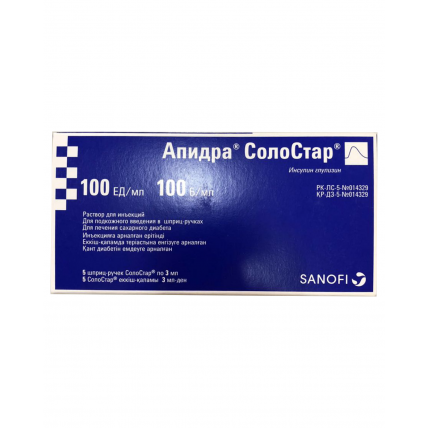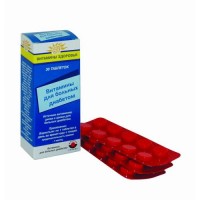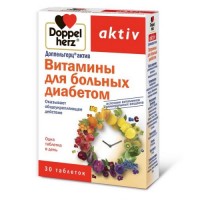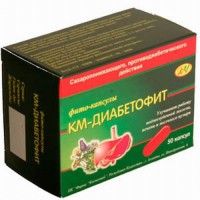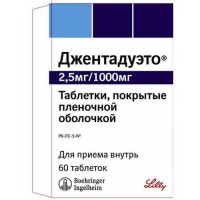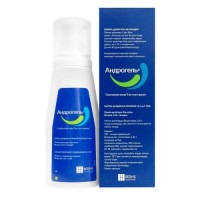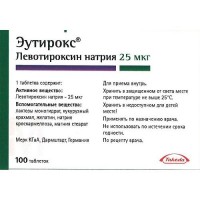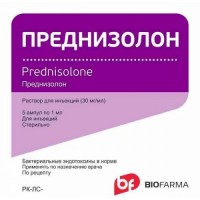Apidra® SoloSTAR® (insulin glulisine injection) 100 Units/ml (5 x 3ml Pens)
- $113.30
Out Of Stock
Apidra is a fast (rapid) acting insulin used for adults and children with diabetes mellitus to control high blood sugar. It is not known if APIDRA is safe or effective in children less than 4 years of age with type 1 diabetes or in children with type 2 diabetes.
1 ml contains insulin glulisine 100 U (3.49 mg);
Excipients:
metacresol (m-cresol),
trometamol,
sodium chloride,
polysorbate 20,
sodium hydroxide,
hydrochloric acid,
water d / i.
Hypoglycemic drug. Insulin glulisine is a recombinant analog of human insulin, which is equivalent in action to normal human insulin.
The action of insulin glulisine is faster and the duration of action is shorter than that of standard human insulin. The mechanism of action of insulin glulisine is to regulate glucose metabolism.
Insulin preparations lower blood glucose levels by stimulating peripheral glucose uptake, especially by skeletal muscle and adipose tissue, and by suppressing liver glucose production.
Insulin inhibits lipolysis in adipocytes, inhibits proteolysis and stimulates protein synthesis. With subcutaneous administration, the effect of insulin glulisine begins much earlier and lasts shorter than that of human insulin preparations: its hypoglycemic activity begins in 10-20 minutes.
The hypoglycemic effects of insulin glulisine and human insulin are equivalent when administered intravenously. One unit of insulin glulisine has the same hypoglycemic effect as one unit of human insulin.
Treatment of diabetes mellitus in adults, adolescents and children aged 6 years and older, when insulin therapy is necessary.
Application during pregnancy and lactation
There is insufficient information on the use of insulin glulisine in pregnant women.
Reproductive studies in animals have not revealed any differences between insulin glulisine and human insulin with respect to the course of pregnancy, embryonic / fetal development, labor and postnatal development.
When prescribing Apidra SoloStar, pregnant women should be careful. Careful monitoring of blood glucose levels is imperative. Patients with pre-pregnancy or gestational diabetes mellitus need to maintain optimal metabolic control throughout pregnancy.
During the first trimester of pregnancy, the need for insulin may decrease, and during the second and third trimesters, it, as a rule, may increase. Immediately after childbirth, the need for insulin decreases rapidly. Breastfeeding mothers may need to adjust their insulin dosage and diet.
Hypersensitivity to insulin glulisine or to any of the components of the drug; Hypoglycemia.
Use with caution in pregnant women.
Hypoglycemia is the most frequent undesirable effect of insulin therapy, which can occur when too high doses of insulin are used, exceeding the need for it.
Adverse reactions associated with drug administration observed in clinical studies are listed below by organ system and in decreasing order of frequency of occurrence. When describing the frequency of occurrence, the following criteria are used: very often -> 10%; often -> 1% and <10%; sometimes -> 0.1% and <1%; rarely -> 0.01% and <0.1%; very rarely - <0.01%.
From the side of metabolism: very often - hypoglycemia. Symptoms of hypoglycemia usually come on suddenly. However, usually neuropsychiatric disorders against the background of neuroglycopenia (feeling of fatigue, unusual fatigue or weakness, decreased ability to concentrate, drowsiness, visual disturbances, headache, nausea, confusion or loss of consciousness, convulsive syndrome) are preceded by symptoms of adrenergic counterregulation (activation of the sympathoadrenal system in response to hypoglycemia): hunger, irritability, nervous excitement or tremors, anxiety, pallor of the skin, cold sweat, tachycardia, palpitations (the faster hypoglycemia develops and the more severe it is, the more pronounced the symptoms of adrenergic counterregulation).
Severe hypoglycemic episodes, especially if repeated, can damage the nervous system. Episodes of prolonged and severe hypoglycemia can threaten the lives of patients, since with an increase in hypoglycemia, even death is possible.
Local reactions: often - local hypersensitivity reactions (hyperemia, swelling and itching at the injection site). These reactions are usually transient and disappear with continued treatment; rarely - lipodystrophy (as a result of a violation of the alternation of insulin injection sites in any of the areas / administration of the drug to the same place /).
Allergic reactions: sometimes - urticaria, a feeling of tightness in the chest, bronchospasm, allergic dermatitis, itching. Severe cases of generalized allergic reactions (including anaphylactic reactions) can be life-threatening.
No pharmacokinetic interaction studies have been conducted. Based on the available empirical knowledge of other similar drugs, the emergence of a clinically significant pharmacokinetic in interaction is unlikely.
Some substances can affect glucose metabolism, which may require adjusting the doses of insulin glulisine and especially careful monitoring of treatment. Substances that can increase the hypoglycemic effect of insulin and increase the susceptibility to hypoglycemia include: oral hypoglycemic agents, angiotensin-converting enzyme inhibitors, disopyramide, fibrates, fluoxetine, monoamine oxidase inhibitors, pentoxifylline, propoxyphene and saline salicylates, propoxyphene, salicrobamidamide drugs. Substances that can reduce the hypoglycemic effect of insulin include: GCS, danazol, diazoxide, diuretics, isoniazid, phenothiazine derivatives, somatropin, sympathomimetics (for example, epinephrine (adrenaline), salbutamol, terbutaline), thyroid hormones, estrogens, progestins contraceptives), protease inhibitors, and antipsychotic drugs (such as olanzapine and clozapine).
S / c, shortly (0-15 minutes) before or shortly after a meal.
Apidra SoloStar should be used in treatment regimens that include either intermediate-acting insulin, or long-acting insulin, or a long-acting insulin analogue.
In addition, Apidra SoloStar can be used in combination with oral hypoglycemic agents.
The dosage regimen of Apidra SoloStar is selected individually.
Symptoms: there is no specific data on insulin glulisine overdose; hypoglycemia of varying severity may develop.
Treatment: Episodes of mild hypoglycemia can be treated with glucose or sugar-containing foods. Therefore, it is recommended that patients with diabetes have sugar cubes, candy, cookies or sweet fruit juice with them at all times.
Episodes of severe hypoglycemia, during which the patient loses consciousness, can be stopped by intramuscular or subcutaneous administration of 0.5-1 mg of glucagon or intravenous administration of dextrose (glucose). If the patient does not respond to the administration of glucagon within 10-15 minutes, it is also necessary to inject dextrose IV.
After recovery of consciousness, it is recommended to give the patient carbohydrates by mouth to prevent recurrence of hypoglycemia. After glucagon administration, the patient should be followed up in a hospital to determine the cause of this severe hypoglycemia and to prevent other similar episodes.
Transfer of a patient to a new type of insulin or insulin from another manufacturer must be carried out under strict medical supervision, because dose changes may be required due to changes in insulin concentration, brand (manufacturer), type of insulin (soluble, insulin-isophane, etc.), type of insulin (animal origin) and / or method of production.
In addition, correction of concomitant oral hypoglycemic therapy may be required.
Using inadequate doses of insulin or stopping treatment, especially in patients with type 1 diabetes mellitus, can lead to the development of hyperglycemia and diabetic ketoacidosis - conditions that are potentially life-threatening.
In the dark place at a temperature of 2-8 ° C (do not freeze)
Shelf life - 2 years
Structure
1 ml contains insulin glulisine 100 U (3.49 mg);
Excipients:
metacresol (m-cresol),
trometamol,
sodium chloride,
polysorbate 20,
sodium hydroxide,
hydrochloric acid,
water d / i.
Pharmachologic effect
Hypoglycemic drug. Insulin glulisine is a recombinant analog of human insulin, which is equivalent in action to normal human insulin.
The action of insulin glulisine is faster and the duration of action is shorter than that of standard human insulin. The mechanism of action of insulin glulisine is to regulate glucose metabolism.
Insulin preparations lower blood glucose levels by stimulating peripheral glucose uptake, especially by skeletal muscle and adipose tissue, and by suppressing liver glucose production.
Insulin inhibits lipolysis in adipocytes, inhibits proteolysis and stimulates protein synthesis. With subcutaneous administration, the effect of insulin glulisine begins much earlier and lasts shorter than that of human insulin preparations: its hypoglycemic activity begins in 10-20 minutes.
The hypoglycemic effects of insulin glulisine and human insulin are equivalent when administered intravenously. One unit of insulin glulisine has the same hypoglycemic effect as one unit of human insulin.
Indications
Treatment of diabetes mellitus in adults, adolescents and children aged 6 years and older, when insulin therapy is necessary.
Application during pregnancy and lactation
There is insufficient information on the use of insulin glulisine in pregnant women.
Reproductive studies in animals have not revealed any differences between insulin glulisine and human insulin with respect to the course of pregnancy, embryonic / fetal development, labor and postnatal development.
When prescribing Apidra SoloStar, pregnant women should be careful. Careful monitoring of blood glucose levels is imperative. Patients with pre-pregnancy or gestational diabetes mellitus need to maintain optimal metabolic control throughout pregnancy.
During the first trimester of pregnancy, the need for insulin may decrease, and during the second and third trimesters, it, as a rule, may increase. Immediately after childbirth, the need for insulin decreases rapidly. Breastfeeding mothers may need to adjust their insulin dosage and diet.
Contraindications
Hypersensitivity to insulin glulisine or to any of the components of the drug; Hypoglycemia.
Use with caution in pregnant women.
Side effects
Hypoglycemia is the most frequent undesirable effect of insulin therapy, which can occur when too high doses of insulin are used, exceeding the need for it.
Adverse reactions associated with drug administration observed in clinical studies are listed below by organ system and in decreasing order of frequency of occurrence. When describing the frequency of occurrence, the following criteria are used: very often -> 10%; often -> 1% and <10%; sometimes -> 0.1% and <1%; rarely -> 0.01% and <0.1%; very rarely - <0.01%.
From the side of metabolism: very often - hypoglycemia. Symptoms of hypoglycemia usually come on suddenly. However, usually neuropsychiatric disorders against the background of neuroglycopenia (feeling of fatigue, unusual fatigue or weakness, decreased ability to concentrate, drowsiness, visual disturbances, headache, nausea, confusion or loss of consciousness, convulsive syndrome) are preceded by symptoms of adrenergic counterregulation (activation of the sympathoadrenal system in response to hypoglycemia): hunger, irritability, nervous excitement or tremors, anxiety, pallor of the skin, cold sweat, tachycardia, palpitations (the faster hypoglycemia develops and the more severe it is, the more pronounced the symptoms of adrenergic counterregulation).
Severe hypoglycemic episodes, especially if repeated, can damage the nervous system. Episodes of prolonged and severe hypoglycemia can threaten the lives of patients, since with an increase in hypoglycemia, even death is possible.
Local reactions: often - local hypersensitivity reactions (hyperemia, swelling and itching at the injection site). These reactions are usually transient and disappear with continued treatment; rarely - lipodystrophy (as a result of a violation of the alternation of insulin injection sites in any of the areas / administration of the drug to the same place /).
Allergic reactions: sometimes - urticaria, a feeling of tightness in the chest, bronchospasm, allergic dermatitis, itching. Severe cases of generalized allergic reactions (including anaphylactic reactions) can be life-threatening.
Interaction
No pharmacokinetic interaction studies have been conducted. Based on the available empirical knowledge of other similar drugs, the emergence of a clinically significant pharmacokinetic in interaction is unlikely.
Some substances can affect glucose metabolism, which may require adjusting the doses of insulin glulisine and especially careful monitoring of treatment. Substances that can increase the hypoglycemic effect of insulin and increase the susceptibility to hypoglycemia include: oral hypoglycemic agents, angiotensin-converting enzyme inhibitors, disopyramide, fibrates, fluoxetine, monoamine oxidase inhibitors, pentoxifylline, propoxyphene and saline salicylates, propoxyphene, salicrobamidamide drugs. Substances that can reduce the hypoglycemic effect of insulin include: GCS, danazol, diazoxide, diuretics, isoniazid, phenothiazine derivatives, somatropin, sympathomimetics (for example, epinephrine (adrenaline), salbutamol, terbutaline), thyroid hormones, estrogens, progestins contraceptives), protease inhibitors, and antipsychotic drugs (such as olanzapine and clozapine).
How to take, course and dosage
S / c, shortly (0-15 minutes) before or shortly after a meal.
Apidra SoloStar should be used in treatment regimens that include either intermediate-acting insulin, or long-acting insulin, or a long-acting insulin analogue.
In addition, Apidra SoloStar can be used in combination with oral hypoglycemic agents.
The dosage regimen of Apidra SoloStar is selected individually.
Overdose
Symptoms: there is no specific data on insulin glulisine overdose; hypoglycemia of varying severity may develop.
Treatment: Episodes of mild hypoglycemia can be treated with glucose or sugar-containing foods. Therefore, it is recommended that patients with diabetes have sugar cubes, candy, cookies or sweet fruit juice with them at all times.
Episodes of severe hypoglycemia, during which the patient loses consciousness, can be stopped by intramuscular or subcutaneous administration of 0.5-1 mg of glucagon or intravenous administration of dextrose (glucose). If the patient does not respond to the administration of glucagon within 10-15 minutes, it is also necessary to inject dextrose IV.
After recovery of consciousness, it is recommended to give the patient carbohydrates by mouth to prevent recurrence of hypoglycemia. After glucagon administration, the patient should be followed up in a hospital to determine the cause of this severe hypoglycemia and to prevent other similar episodes.
Special instructions
Transfer of a patient to a new type of insulin or insulin from another manufacturer must be carried out under strict medical supervision, because dose changes may be required due to changes in insulin concentration, brand (manufacturer), type of insulin (soluble, insulin-isophane, etc.), type of insulin (animal origin) and / or method of production.
In addition, correction of concomitant oral hypoglycemic therapy may be required.
Using inadequate doses of insulin or stopping treatment, especially in patients with type 1 diabetes mellitus, can lead to the development of hyperglycemia and diabetic ketoacidosis - conditions that are potentially life-threatening.
Storage conditions
In the dark place at a temperature of 2-8 ° C (do not freeze)
Shelf life - 2 years
